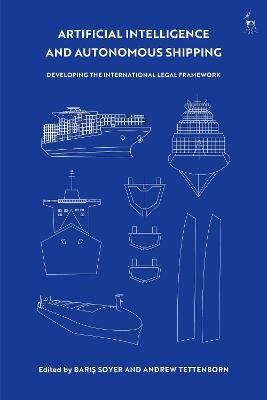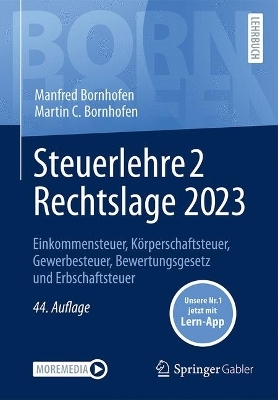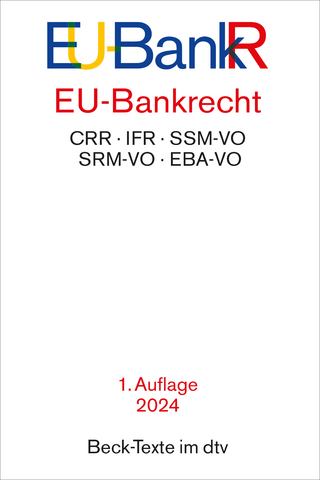
Artificial Intelligence and Autonomous Shipping
Hart Publishing (Verlag)
978-1-5099-4793-5 (ISBN)
Part 1 evaluates how far national shipping regulation, and the public international law background that lies behind it, may need modification and updating to accommodate the use of autonomous ships on international voyages.
Part 2 deals with private law and insurance issues such as collision and pollution liability, salvage, limitation of liability and allocation of risk between carrier and cargo interests.
Part 3 analyses international convention regimes dealing with maritime safety and other matters, arguing for specific changes in the existing conventions such as SOLAS and MARPOL, which would provide the international framework that is necessary for putting autonomous ships into commercial use.
The book also takes the view that amendment of international conventions is important in the case of liability issues, arguing that leaving such matters to national law, particularly issues concerning product liability, could not only restrict or hinder the availability of liability insurance but also hamper the development of technology in this field.
Written by internationally-known experts in their respective areas, the book offers a holistic approach to the debate on autonomous ships and makes a timely and important contribution to the literature.
Baris Soyer is Professor of Commercial and Maritime Law and Director and Andrew Tettenborn is Professor of Commercial Law, both at the Institute of International Shipping and Trade Law at Swansea University.
PART I
MASS IN THE CONTEXT OF THE EXISTING LEGAL FRAMEWORK
1. International Regulation of Shipping and Unmanned Vessels
Professors Simon Baughen, Swansea University, UK and Andrew Tettenborn, Swansea University, UK
I. Introduction
A. Degrees of Automation
B. The Approach of the CMI and this Chapter
C. The Master and the Crew – A Definitional Issue
II. The Issues Arising
A. Manning Requirements
B. References to Onboard Human Activity by Master or Crew
C. Documentary Requirements
D. Vessel Construction, Design and Operation: SOLAS, ISPS and Beyond
III. Conclusion
2. International Law of the Sea and Autonomous Cargo ‘Vessels’
Dr Youri van Logchem, Swansea University, UK
I. Introduction
II. Maritime Autonomous Craft and the Law of the Sea: An Overview
III. The Threshold Question of Defining Autonomous Cargo Craft as Ships/Vessels
A. Reviewing the State of the Art
B. What Constitutes a Ship/Vessel under International Law of the Sea?
C. What Constitutes a Ship/Vessel Under the LOSC?
D. Applying the General Rule on Treaty Interpretation to the Terms Ship/Vessel as Contained in the LOSC
IV. The Entitlement of Vessels to Navigational Rights and Freedoms
A. Internal Waters
B. Territorial Sea
C. Straits
D. EEZ/High Seas
V. Flag State Jurisdiction
A. The Genuine Link Requirement
B. The Impact of a Master, Officers and Crew Not Being on Board a Ship on a Flag State’s Ability to Perform
its Obligations
C. Rendering Assistance at Sea
VI. Charting the Way Forward
A. International Adjudication of Disputes Concerning Autonomous Maritime Craft
B. Reading the Language of the LOSC Teleologically
C. Amending the Existing Regime, Creating a New One or Involving the IMO – Scouring the Field for a
Realistic Option
VII. Concluding Remarks
3. Autonomous Ships and Private Law Issues
Professors Baris Soyer, Swansea University, UK and Andrew Tettenborn, Swansea University, UK
I. Changes to Existing Regimes
A. Liability for Negligent Navigation (Collisions)
B. Salvage
C. Arrest
D. Limitation of Liability
E. Wreck Removal
II. Reach of Particular Regimes: Definition of the Vessels to Which they Apply
A. Negligent Navigation (Collisions)
B. Salvage
C. Pollution
D. Wreck Removal
E. Limitation of Liability
F. Arrest
G. Strict Liability under the Harbours, Docks and Piers Clauses Act 1847
III. Concluding Thoughts
4. Unmanned Vessels and International Conventions for the Carriage of Goods by Sea
Professor Simon Baughen, Swansea University, UK
I. International Liability Conventions
for the Carriage of Goods by Sea
A. The Hague and Hague-Visby Rules
B. The Hamburg Rules 1978
C. The Rotterdam Rules 2008
D. Title to Sue: The Carriage of Goods by Sea Act 1992
E. General Average
II. Charterparties
A. Demise Charters: Barecon 2001
B. Time Charters: NYPE 2015
C. Voyage Charters: GENCON 1994
III. Conclusion
PART II
MASS: NEW LEGAL ISSUES EMERGING AND INSURANCE
5. Cyber Risks, Autonomous Operations and Risk Perceptions: Is a New Liability Paradigm Required?
Associate Professor George Leloudas, Swansea University, UK
I. Changing Physical World
II. The Relevance of Cyber Risks Management for Shipping Operations
III. The Impact of Cyber Risks on International Conventions
A. Passenger Liability under the 2002 Athens Convention
B. Cyberworthiness and Contracts of Carriage of Goods
IV. Autonomous Operations and Cyber Risks
V. Time to Consider the Liability Paradigm?
VI. Conclusion
6. Product Liability: Autonomous Ships
Associate Professor Roderick Bagshaw, Oxford University, UK
I. Personal Injuries
A. Product
B. Producer
C. Defendants Other than the Producer
D. Defect
E. Development Risk
II. Physical Damage to External Commercial Property, Such as a Different Vessel
A. Duty of Care
B. Fault
III. Physical Damage to the Autonomous Vessel Itself
IV. Losses as a Result of an Inability to Use the Autonomous Vessel for a Period for Reasons Other than the Need to Perform Physical Repairs
V. Conclusions
7. Maritime Autonomous Surface Ships: Marine Insurance Response to Risks
Peter MacDonald Eggers QC, 7 King’s Bench Walk, UK
I. Introduction
II. Developments in the Maritime Industry
III. Issues Concerning Good Faith
A. The Assured’s Duty of Fair Presentation of the Risk
B. The Effect of the Insurer’s Knowledge on the Assured’s Risk Presentation
IV. The Cover Afforded by Traditional Marine Policies: Non-affirmative Cover and Exclusions
V. Affirmative Cover or Exclusions
VI. The Potential Statutory Liability of Insurers
VII. Claims Presentation and Handling
VIII. Conclusion
PART III
THE WAY FORWARD
8. The Future of Autonomous Shipping – The Regulatory Challenge
Professor Baris Soyer, Swansea University, UK
I. Introduction
II. Problems and Challenges Facing the Regulatory Process
A. Technical Barriers
B. The Nature of Technological Developments
C. Additional Complications
D. Different Pressures and Challenges in Regulating Different Areas of Maritime Law – Different Courses for Different Horses
III. The Shape of International Regulation – The Way Forward
A. Technical Rules on Safety, Pollution Prevention and
Training/Watchkeeping Standards
B. Private Maritime Law Rules
IV. Concluding Remarks
| Erscheinungsdatum | 24.05.2021 |
|---|---|
| Verlagsort | Oxford |
| Sprache | englisch |
| Maße | 156 x 234 mm |
| Themenwelt | Recht / Steuern ► EU / Internationales Recht |
| Recht / Steuern ► Wirtschaftsrecht ► Bank- und Kapitalmarktrecht | |
| Recht / Steuern ► Wirtschaftsrecht ► Handelsrecht | |
| ISBN-10 | 1-5099-4793-0 / 1509947930 |
| ISBN-13 | 978-1-5099-4793-5 / 9781509947935 |
| Zustand | Neuware |
| Haben Sie eine Frage zum Produkt? |
aus dem Bereich


